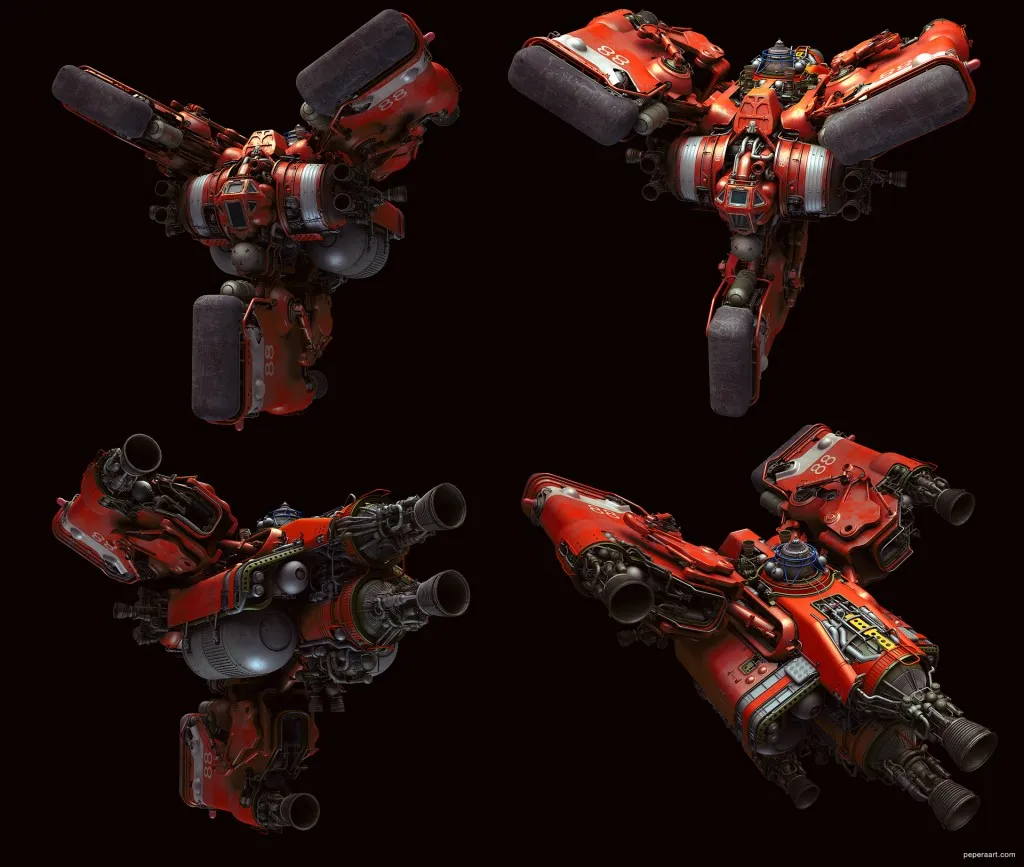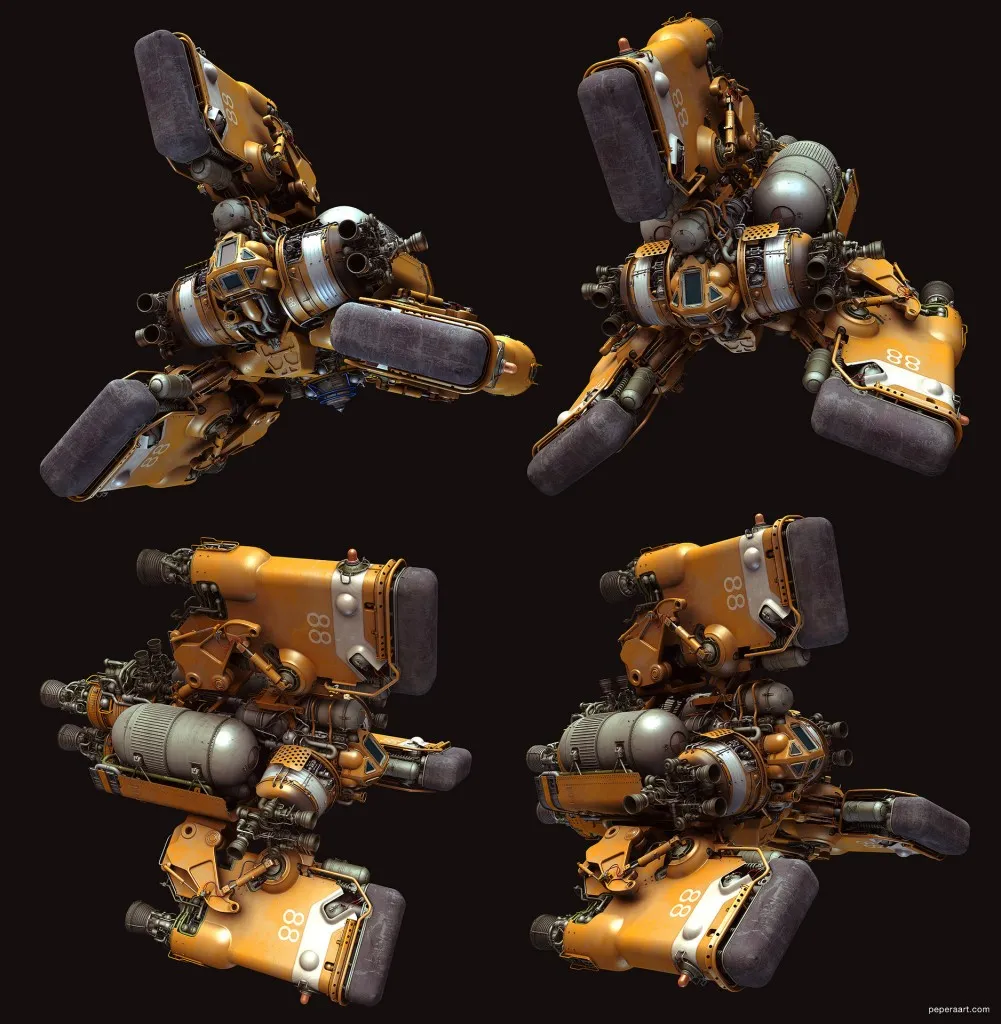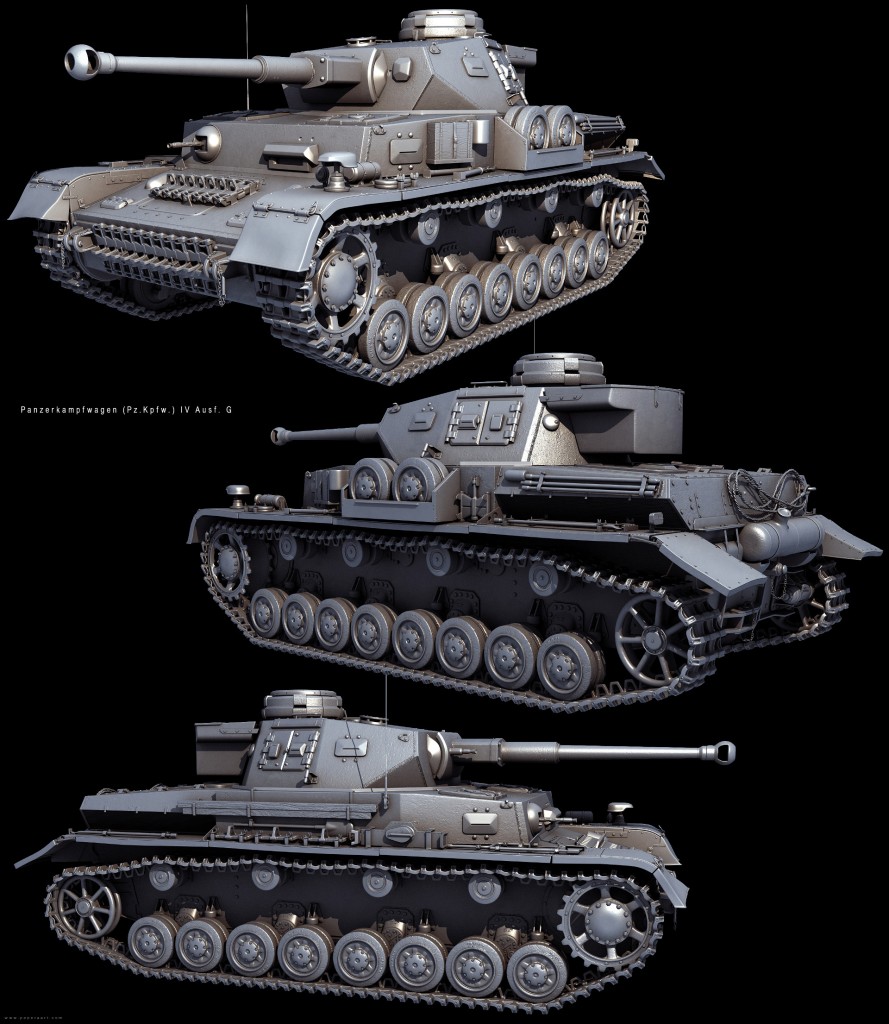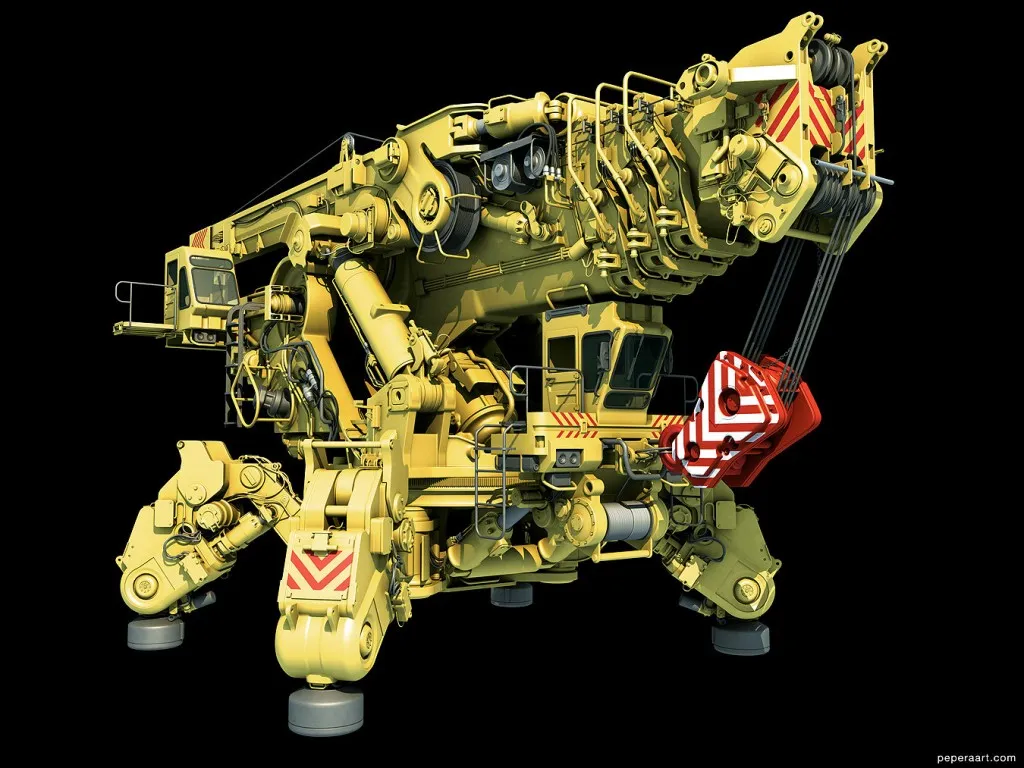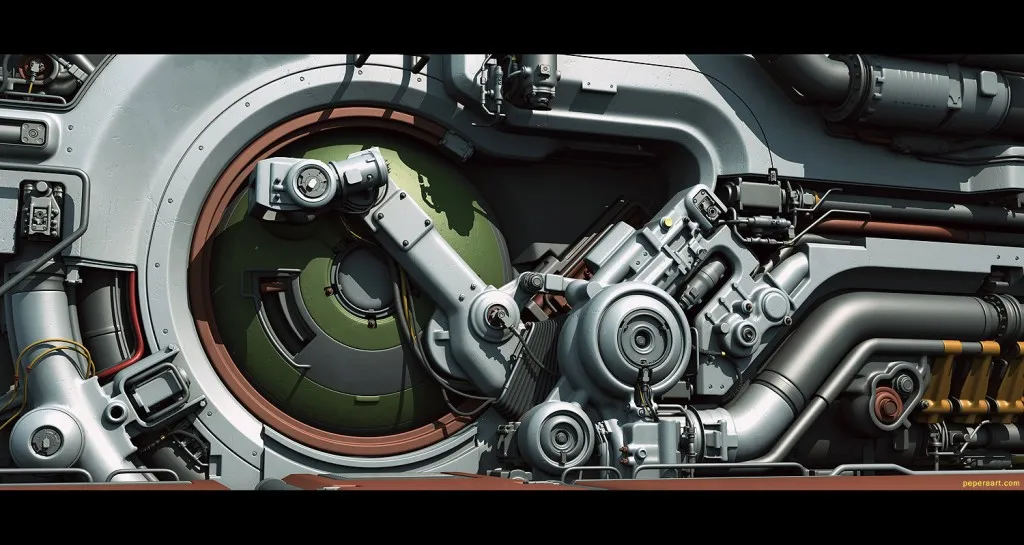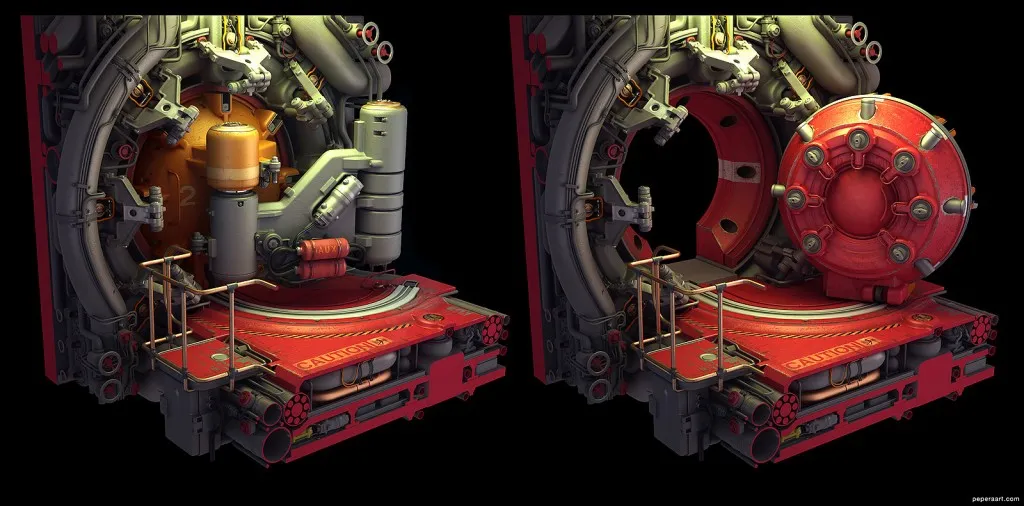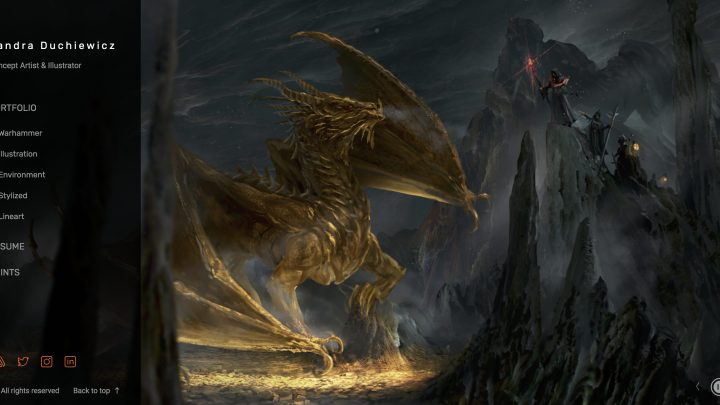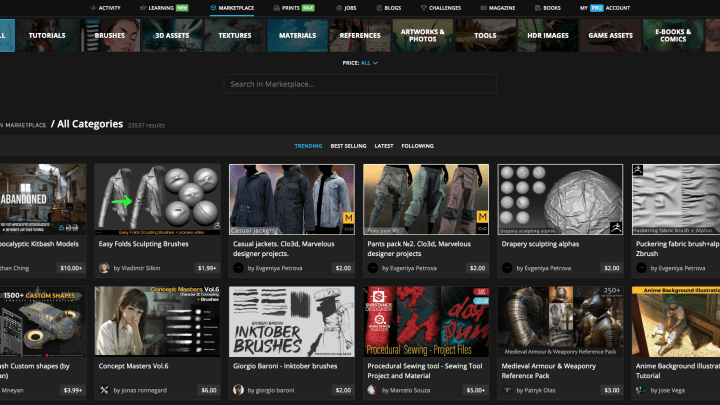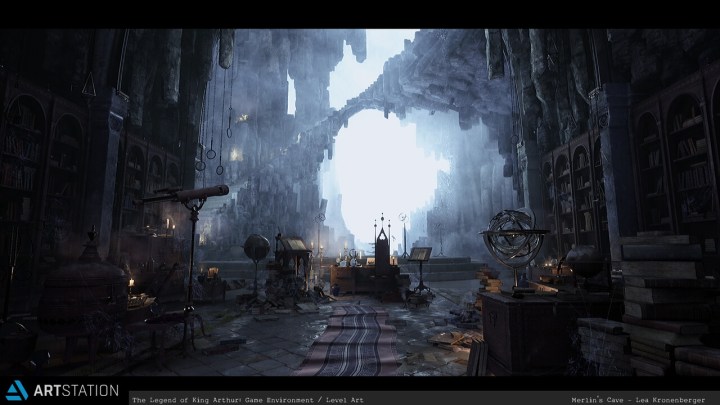Game artist Paul Pepera
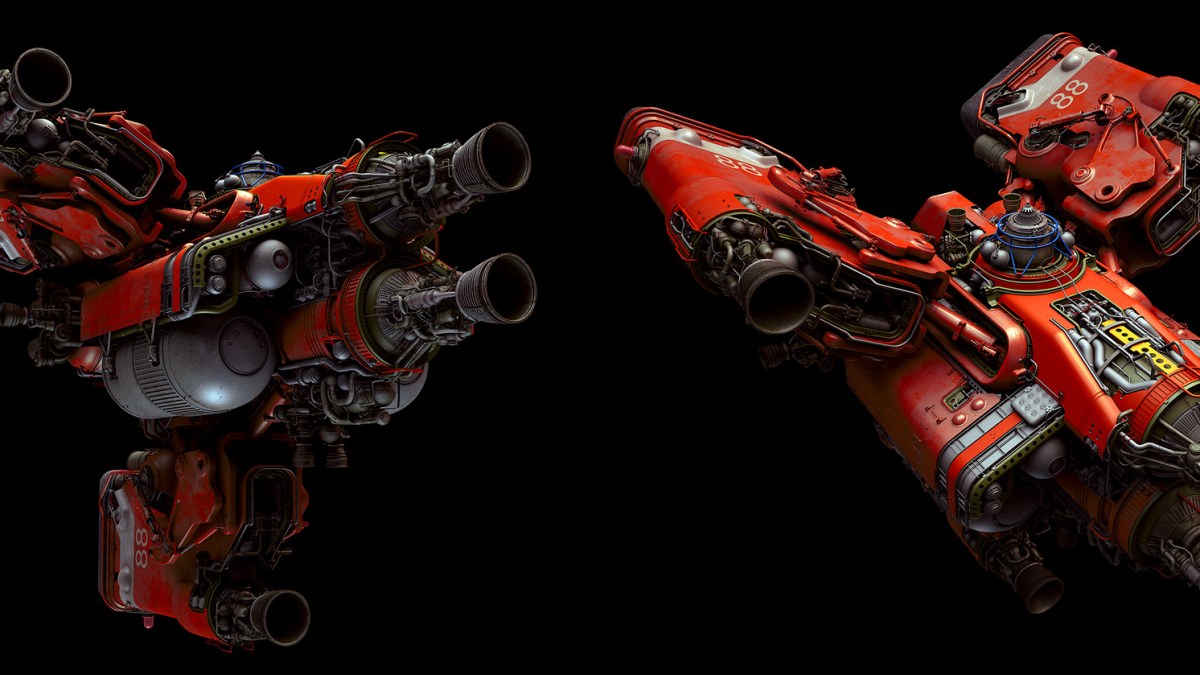
 Paul Pepera is a 3D game artist, currently working at Oculus VR. He previously worked at Valve Corporation on Team Fortress 2; as lead mission artist at 343 Industries on Halo 4; as environment artist at id Software on the as-yet-unreleased Doom 4; at TimeGate Studios on first-person shooter Section 8; and freelance for clients including Tripwire Interactive, where he contributed to tactical shooter Red Orchestra: Heroes of Stalingrad. Paul’s 3D models of machinery, real or imagined, exhibit a striking clarity of form and meticulous attention to detail. We caught up with him to discuss his career, and discover his advice to other artists.
Paul Pepera is a 3D game artist, currently working at Oculus VR. He previously worked at Valve Corporation on Team Fortress 2; as lead mission artist at 343 Industries on Halo 4; as environment artist at id Software on the as-yet-unreleased Doom 4; at TimeGate Studios on first-person shooter Section 8; and freelance for clients including Tripwire Interactive, where he contributed to tactical shooter Red Orchestra: Heroes of Stalingrad. Paul’s 3D models of machinery, real or imagined, exhibit a striking clarity of form and meticulous attention to detail. We caught up with him to discuss his career, and discover his advice to other artists.
Tell us about your journey
I’m a self-taught 3D artist. I started working on games when I was around 12 or 13 years old by modding LucasArts titles like Star Wars: Dark Forces and Jedi Knight. The ‘breakthrough’ in my career came around this time, when I realized I enjoyed making games more than I did playing them. Crafting an experience for an external audience was the most rewarding experience of my life. I used to go home from a regular job and work on modding my favorite games.
My first full-time job in the industry was at TimeGate studios, down in Houston, Texas. I was there for about a year and a half when I decided to go to art school. I was a few weeks out from starting my first semester when I got an email from id Software asking if I would be interested in working on Doom 4. I immediately canceled my college application and took the job at id. After id, I came to 343 Industries to work on Halo 4, where I worked with some of the most amazingly talented artists and programmers I have ever met. Following that I landed a job at Valve – which was a lifelong dream of mine ever since playing Half-Life. Most recently, I took at job at Oculus VR where I’ll be working on the next big thing.
How do you want to impact the world?
I have many long-term goals I want to achieve in my lifetime. I’m always working on personal projects – several of which are IP development. In terms of games, I want to work on projects that stimulate creativity in people: games that are essentially a set of tools and mechanics that people can use to craft their own contextual experiences in a crafted universe. I feel these are the types of experiences that only games can offer.
Outside of games, I really would like to get into filmmaking – everything from cinematography to script writing to editing. The entire creative struggle of making a movie is incredibly appealing.
What are you passionate about?
I particularly enjoy science fiction grounded in physical reality. Personally I don’t like magic and supernatural things – I hate the deus ex machina that usually occurs as a result of having such elements. I think my love for hard science fiction is reflected in my work. I heavily reference real-life designs – though I try to inject just enough whimsy to make the results unique and interesting. For me reality is far stranger and more interesting than anything a person can think of.
It is important to practice art forms outside of CG. I enjoy analog photography and figure drawing – both involve stepping away from the computer. I find that working in traditional media creatively invigorates my CG work.
What would be your #1 advice to other artists?
Be curious about a range of subject matter. The broader your interests, the more sources you can pull inspiration from. The same is true about people – surround yourself with people with a broad range of interests and skills. Artists should hang out with programmers. The fortunate thing about our industry is that the work environment is also extremely educational.
Always surround yourself with people that are better than you – it’s the best way to absorb knowledge and new skill sets. More importantly, it puts you in the proper mindset to better yourself. Seeing someone next to you modeling an amazing piece of art is the most motivational force I know of.
Related Links
Visit Paul’s ArtStation gallery
Visit Paul’s website
